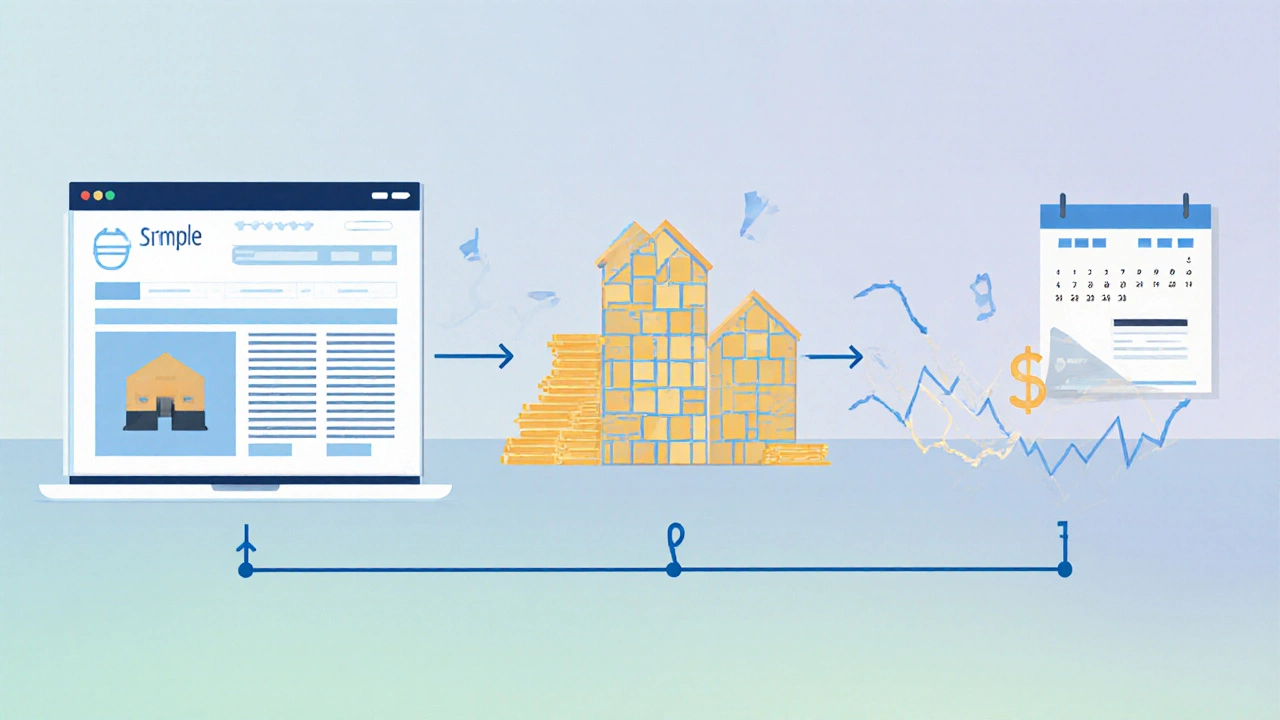Millionaire Net Worth Tracker
Projected Net Worth Growth
Starting Net Worth:
Projected Net Worth in Years:
Net Worth Increase:
Ever wondered why a tiny slice of the population holds most of the wealth? The short answer: Business ownership is the engine that powers roughly 90% of millionaires. Below we unpack how owning a business creates cash flow, equity, and leverage that other income sources can’t match, and we show the side‑hustles that complement it.
Quick Takeaways
- Business ownership generates the majority of millionaire wealth.
- Real‑estate and stock‑market investing amplify that wealth.
- High‑earning careers, frugal living, and compound interest are essential support pillars.
- Diversifying income streams reduces risk and accelerates net‑worth growth.
- A concrete action plan can get you on the millionaire track within a decade.
What Does It Mean to Be a Millionaire?
A Millionaire is an individual whose net worth exceeds one million units of a given currency, typically measured in U.S. dollars. This status isn’t just about a flashy lifestyle; it reflects a portfolio of assets that reliably outpaces inflation and generates ongoing income.
The Core Driver: Business ownership
Business ownership involves holding equity in a company you started, bought, or partnered in. Unlike a salaried role, a business lets you capture the upside of growth, scale operations, and leverage other people’s time and money.
Three mechanisms make it a millionaire‑making machine:
- Cash flow: Daily operations produce profit that can be reinvested.
- Equity appreciation: As the company’s value rises, your stake becomes worth more.
- Leverage: Debt or investors can expand capacity without requiring extra cash.
Take the example of a local bakery that started with $30,000 in personal savings. By the fifth year, steady cash flow allowed the owner to open two more locations, financed partly by a modest small‑business loan. Today, the combined equity is worth over $2million, illustrating the exponential effect of owning and scaling a business.
Supporting Pillar #1: Real‑estate investment
Real‑estate is the most common second‑hand asset among millionaires. Owning rental properties creates a passive income stream, while appreciation adds to net worth.
- Average cap rate for residential rentals in 2024: 5‑7%.
- Long‑term appreciation in major U.S. metros: 3‑4% annually.
When a business owner adds a duplex to their portfolio, the rental cash can cover business operating costs, creating a safety net that fuels further growth.

Supporting Pillar #2: Stock‑market investing
Equity markets provide liquidity and compounding power that complement illiquid business assets.
| Asset Class | Typical Annual Return | Liquidity | Risk Level |
|---|---|---|---|
| Business ownership | 15‑30% | Low | Medium‑High |
| Real estate | 8‑12% | Medium | Medium |
| Stocks (S&P 500) | 7‑10% | High | Medium |
Even modest monthly contributions to a diversified index fund can add thousands of dollars in compound growth over a decade.
Supporting Pillar #3: High‑income career
High‑earning professionals-doctors, lawyers, engineers-often have the cash flow to seed a business or invest in assets.
However, without channeling that income into wealth‑building vehicles, the salary alone rarely produces millionaire status.
Supporting Pillar #4: Frugal lifestyle
Living below your means increases the surplus you can invest.
- Average millionaire saves 20‑30% of pre‑tax income.
- Simple habits-cooking at home, avoiding luxury cars-free up capital for growth.
Supporting Pillar #5: Compound interest
Einstein called it the “eighth wonder of the world.” When you reinvest earnings, the growth becomes exponential.
Example: $10,000 invested at a 7% annual return compounds to $19,672 in 10 years, then to $38,697 in 20 years.

Supporting Pillar #6: Financial education
Understanding cash flow statements, tax strategies, and investment principles lets you make smarter decisions.
Millionaires often read at least one finance‑focused book per quarter and attend seminars on asset protection.
Putting It All Together: A 5‑Step Action Plan
- Identify a solvable problem and launch a small‑scale venture (e.g., e‑commerce, service).
- Reinvest 70% of profits into the business, real‑estate, or diversified stocks.
- Track net‑worth monthly using a simple spreadsheet; adjust allocations when growth stalls.
- Trim personal expenses by 20% and funnel savings into high‑return assets.
- Invest in learning-online courses, mentorship, or local entrepreneur groups.
Stick to the plan for five years, and you’ll likely see a net‑worth crossing the $1million mark, especially if you harness leverage wisely.
Common Pitfalls & How to Avoid Them
- Over‑leveraging: Debt that exceeds cash flow can cripple growth. Keep debt‑to‑cash‑flow ratio under 2:1.
- Ignoring taxes: Use LLCs or S‑corps to protect earnings and reap deductions.
- Chasing trends: Validate demand before scaling; many “hot” ideas fade quickly.
- Neglecting diversification: Relying solely on one business increases risk; add real‑estate or equities.
Frequently Asked Questions
Which type of business creates the most millionaires?
Small‑to‑medium enterprises in sectors like tech, health services, and niche retail have the highest conversion to millionaire status because they can scale quickly with modest capital.
Can I become a millionaire without starting a business?
It’s rare, but possible through disciplined investing in stocks and real‑estate combined with a high‑income career and extreme frugality. However, the odds are far better when you own an equity‑bearing business.
How much capital do I need to start my first venture?
Many successful businesses launch with under $5,000-think dropshipping, freelance services, or a local repair shop. The key is to keep overhead low and validate the market early.
What’s the best way to diversify my assets?
Allocate roughly 40% to your core business, 30% to real‑estate, 20% to diversified equities, and 10% to cash or short‑term instruments for liquidity.
How long does it typically take to reach a million‑dollar net worth?
With disciplined reinvestment and modest leverage, many entrepreneurs hit the milestone in 7‑10 years. Faster growth occurs when the business scales nationally or internationally.





